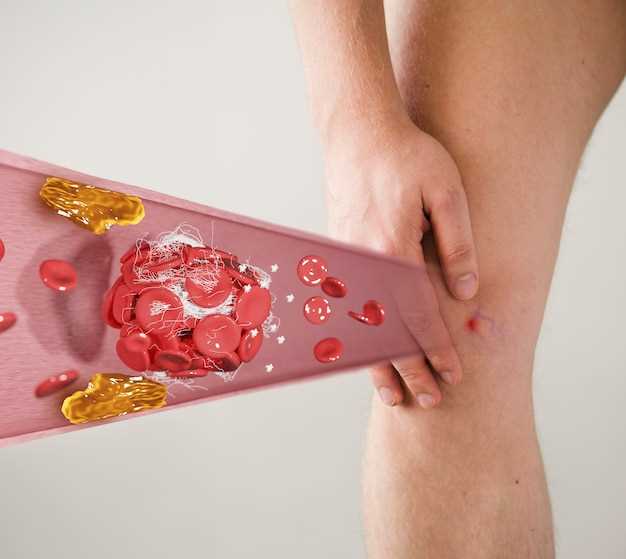
If you suffer from angioedema, you know how uncomfortable and frustrating it can be. Find relief with Metformin – a proven solution to reduce swelling and inflammation. Metformin tackles the root cause of angioedema, providing you with long-lasting relief and improved quality of life. Don’t let angioedema control you, try Metformin today and experience the difference!
Understanding Metformin Angioedema
Metformin angioedema is a rare but serious side effect of metformin medication that can cause swelling in various parts of the body, such as the face, lips, tongue, throat, and even the airways. This condition is characterized by rapid swelling, which can be life-threatening if not treated promptly.
Angioedema can occur in individuals who are sensitive or allergic to metformin. The exact mechanism behind this reaction is not fully understood, but it is believed to involve an immune response triggered by the medication. It is important to be aware of the symptoms of angioedema and seek medical attention immediately if you experience any swelling, especially if it affects your airways.
Common symptoms of metformin angioedema include swelling, itching, redness, and pain in the affected area. In severe cases, swelling of the airways can lead to difficulty breathing, which requires urgent medical intervention. If you suspect you are experiencing angioedema while taking metformin, stop the medication and contact your healthcare provider right away.
Understanding the risks and symptoms of metformin angioedema is crucial for managing this serious side effect and preventing complications. By being aware of the signs and seeking prompt medical attention, you can minimize the impact of angioedema and ensure your safety while using metformin medication.
Symptoms
Metformin angioedema can present with a variety of symptoms that can range from mild to severe. The most common symptoms include:
| Symptom | Description |
| Swelling | Swelling can occur in different parts of the body, such as the face, lips, tongue, throat, or hands. |
| Itching | Itching or hives may appear on the skin, indicating an allergic reaction. |
| Difficulty Breathing | In severe cases, angioedema can cause breathing difficulties due to swelling of the throat or airways. |
| Abdominal Pain | Some individuals may experience abdominal pain or cramping along with other symptoms. |
If you experience any of these symptoms after taking metformin, seek medical attention immediately as angioedema can be life-threatening.
Recognizing the Signs

Metformin angioedema can manifest with various symptoms, which can help you identify the condition early. Some of the common signs to watch for include:
| Bilateral swelling of the lips, tongue, or face |
| Difficulty breathing or swallowing |
| Skin rash or hives |
| Swelling of the hands, feet, or throat |
| Abdominal pain or cramping |
If you experience any of these symptoms after taking metformin, seek medical help immediately. Recognizing the signs of angioedema promptly can lead to timely intervention and better outcomes.
Treatment
When it comes to managing Metformin angioedema, the first step is to seek medical help immediately. Your healthcare provider will assess the severity of the angioedema and prescribe appropriate treatment.
Antihistamines

Antihistamines are commonly used to treat mild cases of angioedema. They work by blocking the effects of histamine, a substance in the body that causes swelling and itching.
Corticosteroids
In more severe cases of Metformin angioedema, corticosteroids may be prescribed to reduce inflammation and swelling. These medications work by suppressing the immune system’s response.
It’s important to follow your healthcare provider’s recommendations and take the prescribed medications as directed. In some cases, hospitalization may be necessary for close monitoring and additional treatment.
Managing Metformin Angioedema
Managing Metformin angioedema requires prompt action and appropriate treatment. Here are some key steps to effectively manage Metformin-induced angioedema:
1. Stop Taking Metformin
It is crucial to discontinue the use of Metformin immediately upon experiencing symptoms of angioedema. Consult your healthcare provider for guidance on alternative medications for managing your condition.
2. Seek Medical Attention
Upon experiencing symptoms of angioedema, seek medical attention promptly to assess the severity of the condition and receive appropriate treatment. Do not delay seeking help as angioedema can be life-threatening in severe cases.
By following these steps, you can effectively manage Metformin angioedema and ensure your safety and well-being. Remember, timely intervention and medical guidance are key in dealing with this condition.
Prevention
Preventing Metformin angioedema is crucial for individuals taking this medication. Here are some tips to help avoid angioedema:
- Avoid known allergens that may trigger angioedema.
- Always take Metformin as prescribed by your healthcare provider.
- Inform your doctor about any previous history of angioedema or allergic reactions.
- Be aware of the symptoms of angioedema and seek medical help if you experience any.
- Monitor your blood sugar levels regularly to ensure optimal management of your diabetes.
By following these preventive measures, individuals can reduce the risk of developing Metformin angioedema and ensure their health and well-being.
Tips for Avoiding Angioedema
Angioedema caused by Metformin can be concerning and uncomfortable. Here are some tips to help you avoid experiencing this side effect:
1. Consult with your healthcare provider:
Before starting Metformin or if you notice any symptoms of angioedema, consult with your healthcare provider. They can provide guidance on how to proceed and may recommend alternative medications if needed.
2. Monitor your symptoms:
Be vigilant about any changes in your body while taking Metformin. Keep track of any swelling, especially in the face, lips, or throat, as it could be a sign of angioedema.
3. Take your medication as prescribed:Follow your healthcare provider’s instructions on how to take Metformin. Avoid skipping doses or changing the dosage without consulting them first. |
By following these tips and staying informed about Metformin angioedema, you can minimize the risk of experiencing this potential side effect.
Impact
Metformin angioedema can have a significant impact on the quality of life of those affected. The sudden swelling of the skin and mucous membranes can be not only uncomfortable but also alarming. In severe cases, angioedema can be life-threatening, especially if the swelling affects the airways and leads to difficulty breathing.
Individuals who experience angioedema may find it challenging to engage in daily activities and may suffer from emotional distress due to the unpredictability of the condition. This can lead to increased anxiety and decreased self-esteem.
Furthermore, the treatment and management of metformin angioedema can also have an impact on one’s lifestyle and finances, as medical consultations, medications, and potential hospitalizations can incur costs and require time and effort.
Overall, the impact of metformin angioedema goes beyond physical symptoms and can affect various aspects of a person’s life. It is essential to raise awareness about this condition and provide support and resources to those affected.
